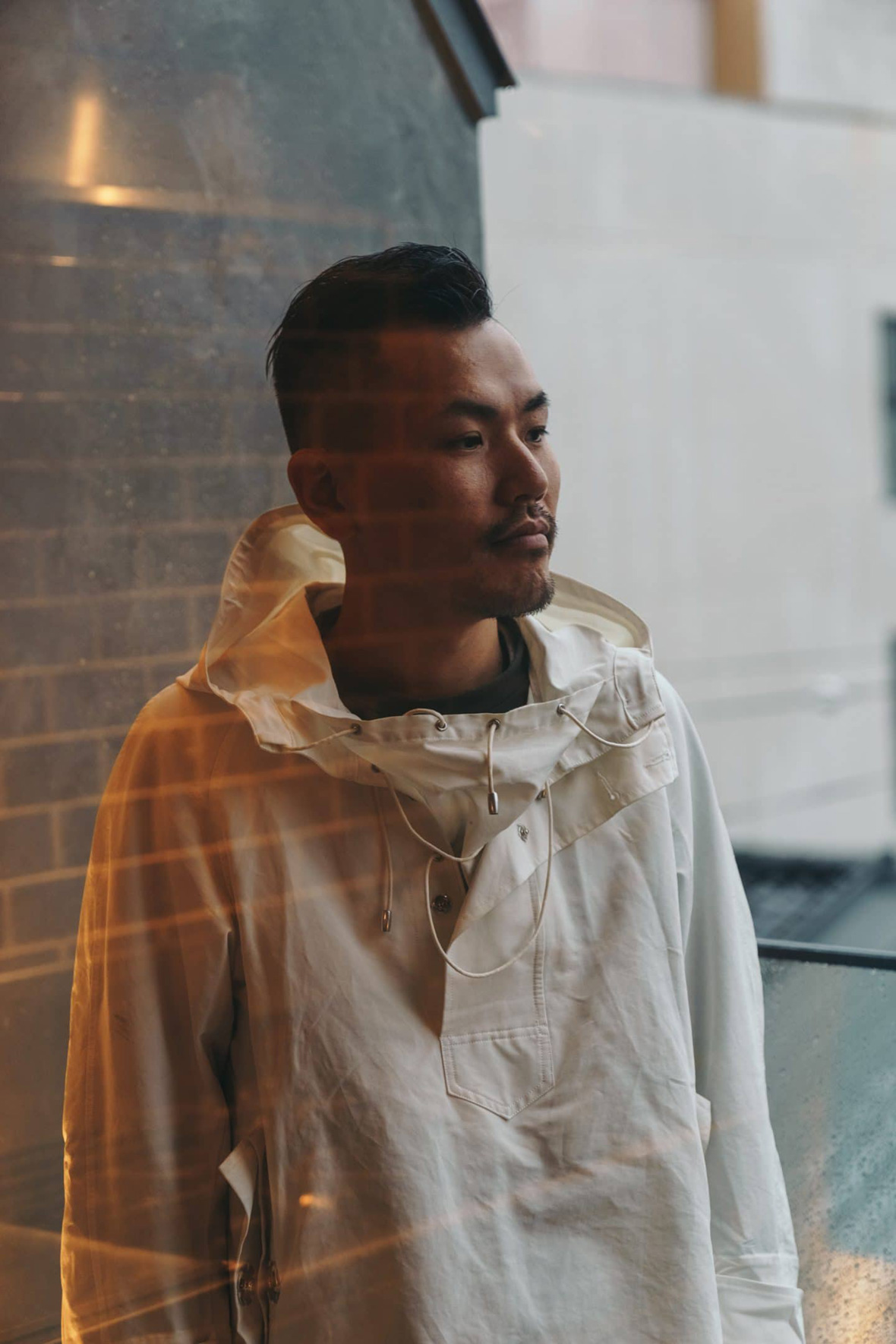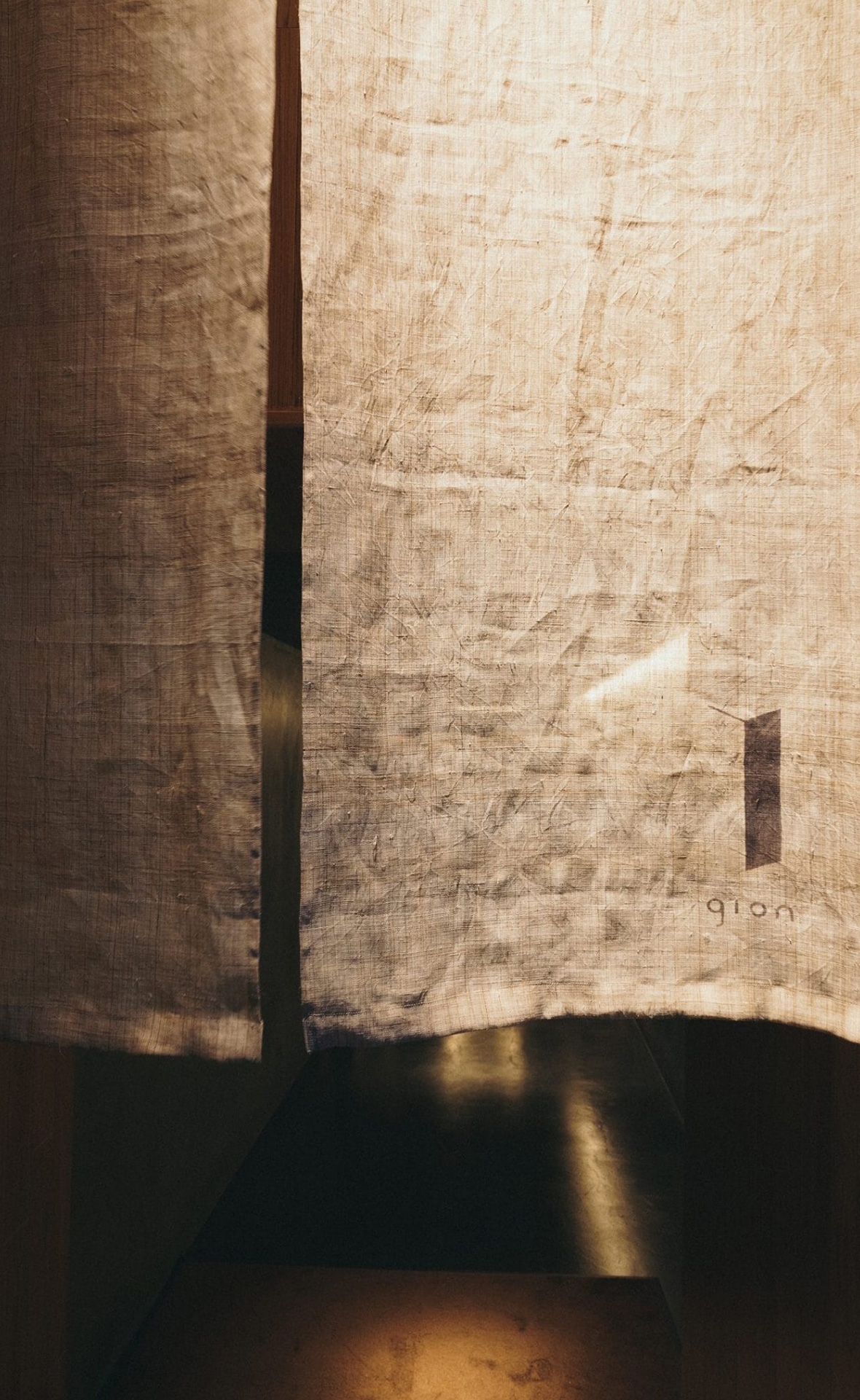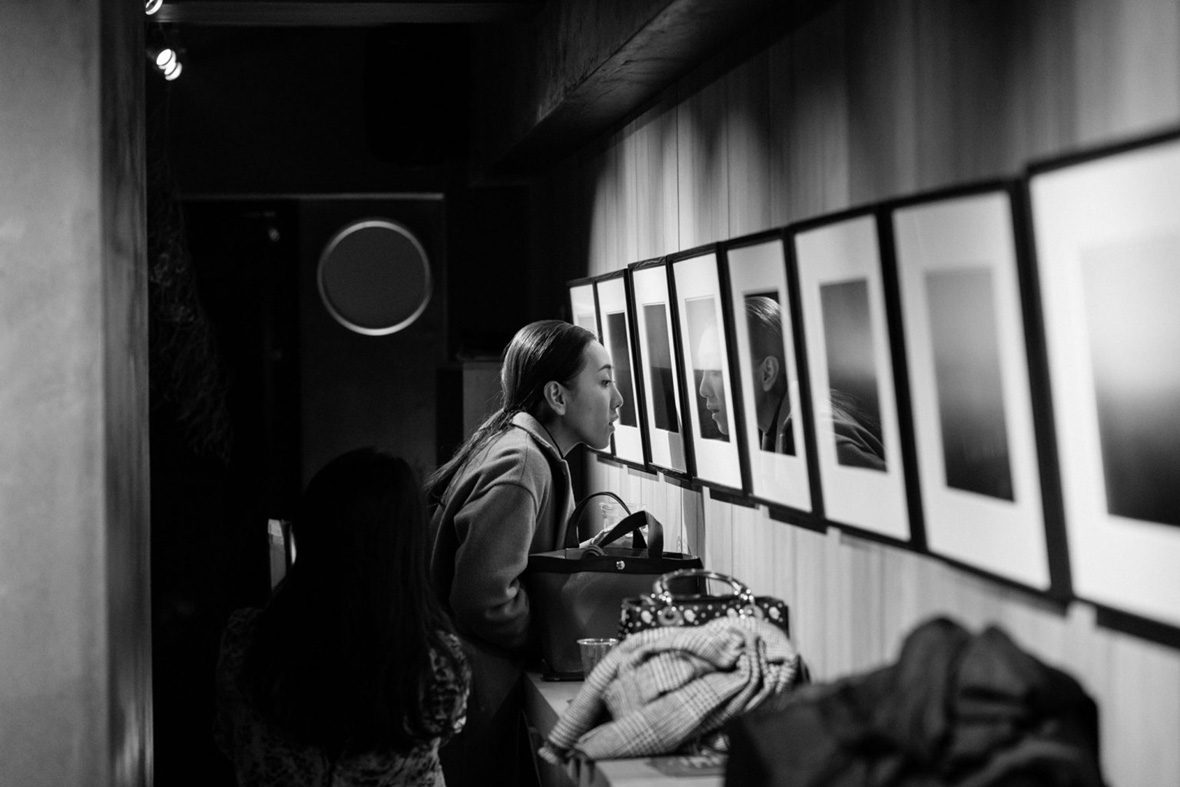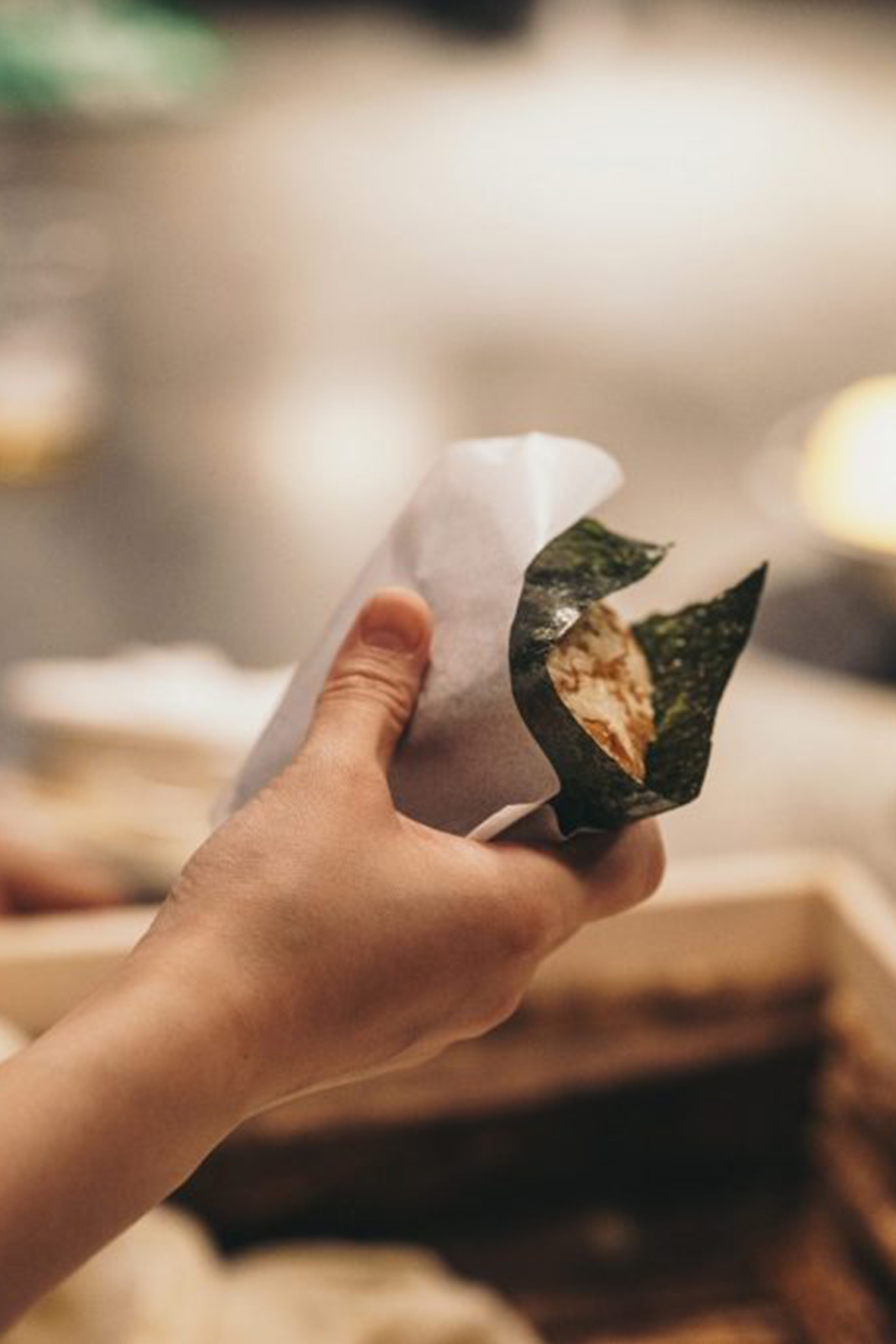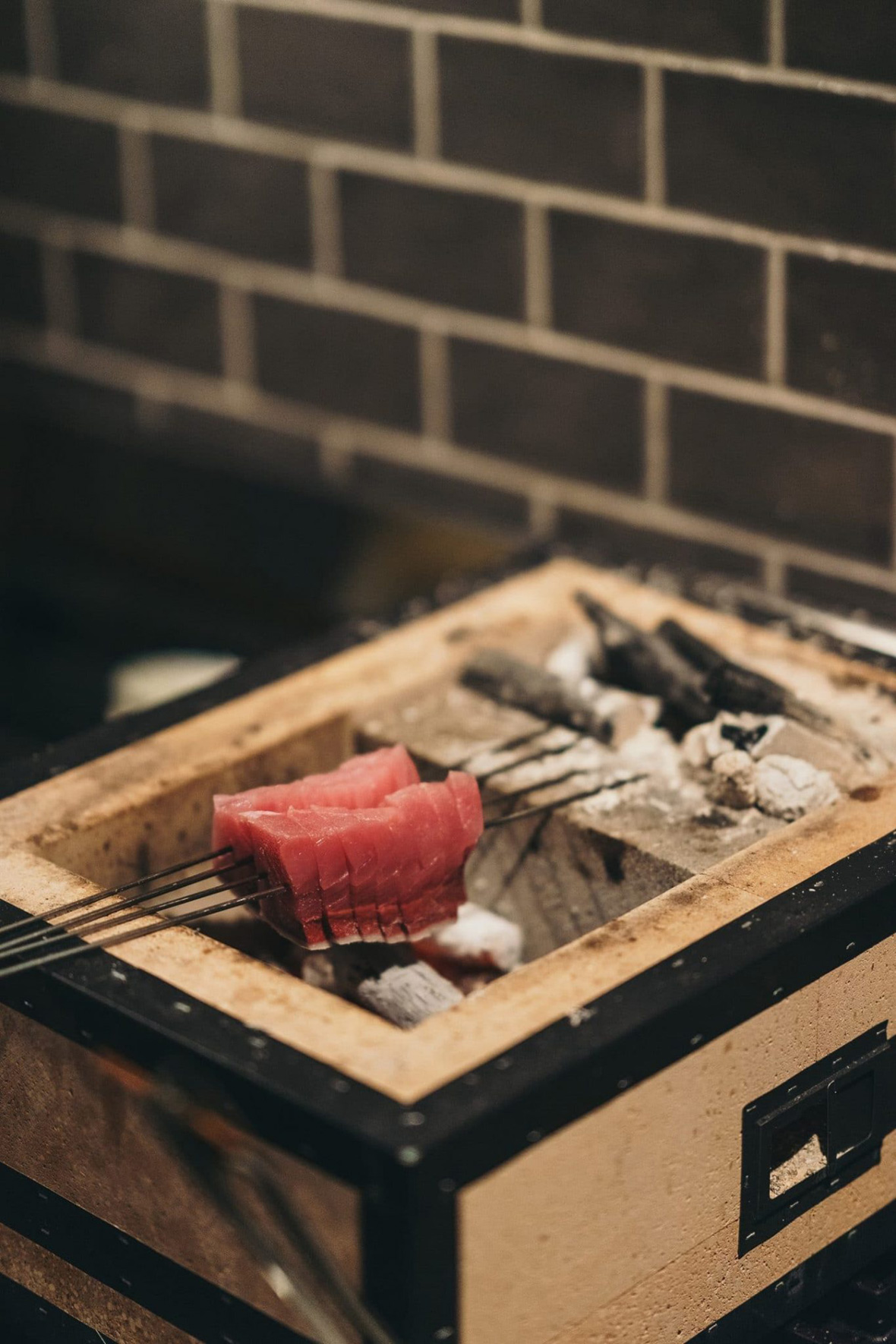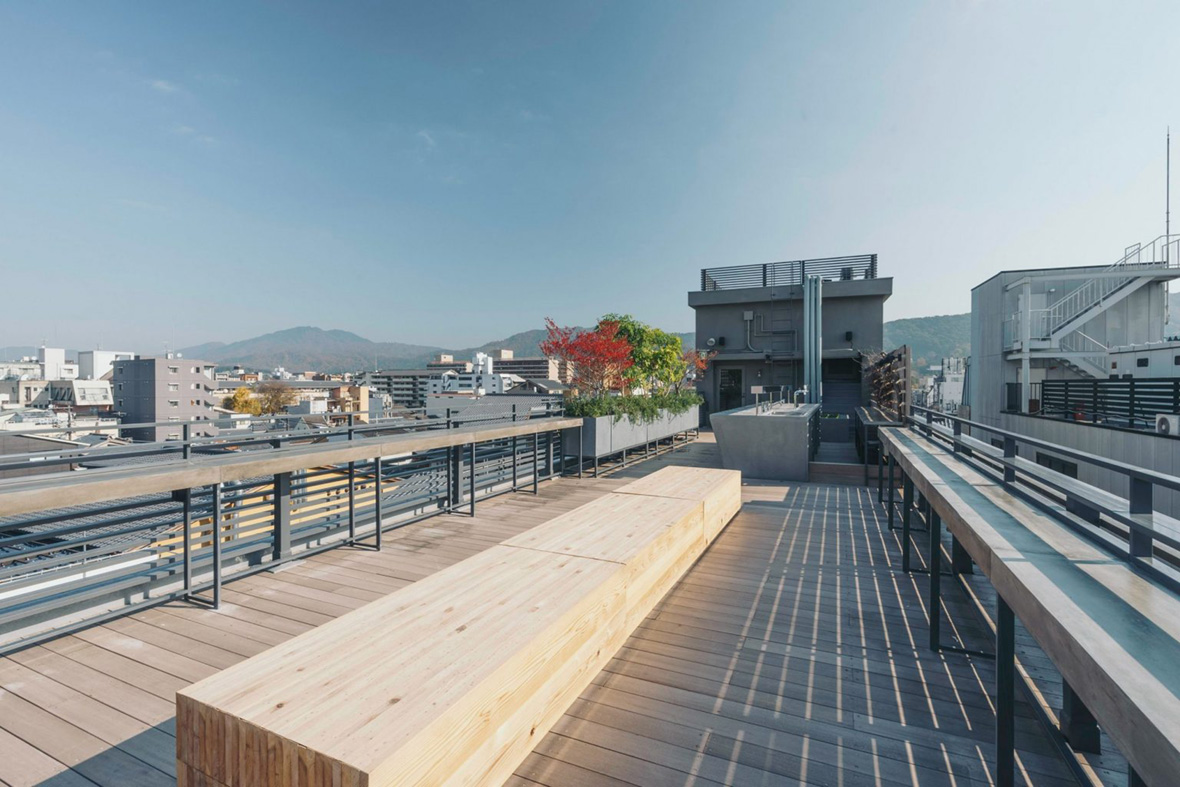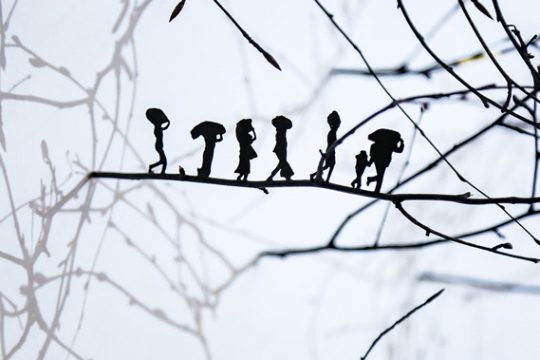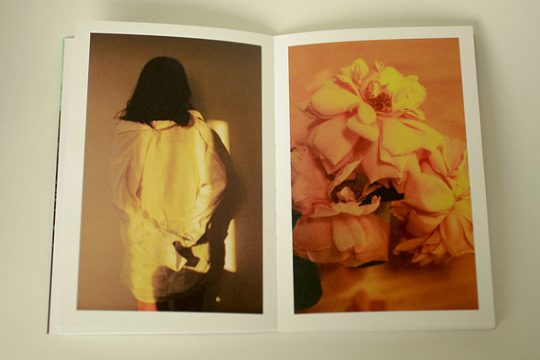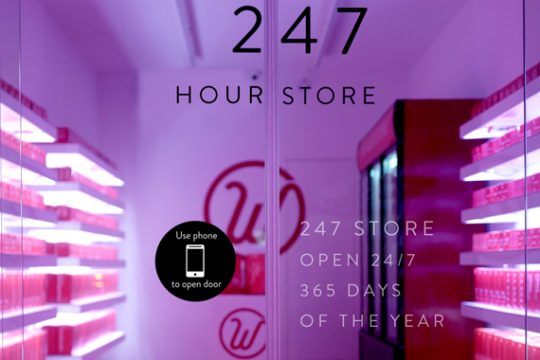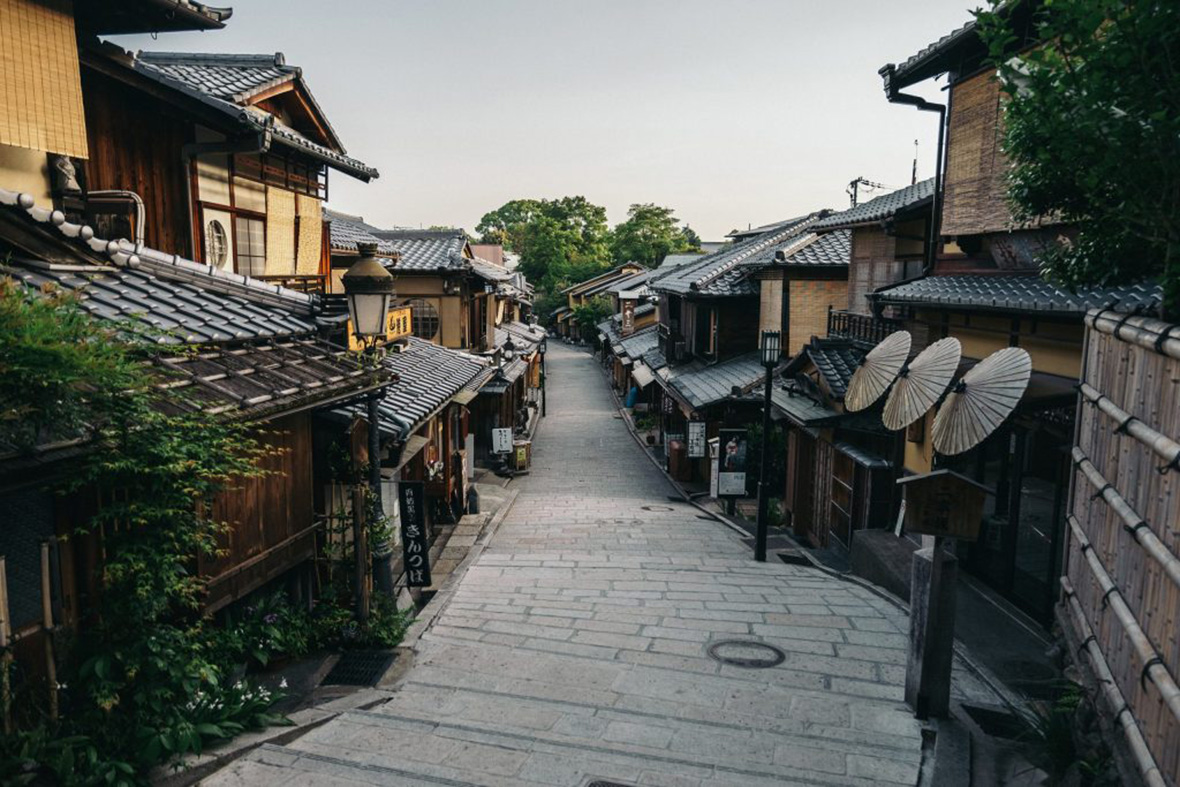
This story is part of a content partnership and media exchange between Neocha and MAEKAN. To see more of MAEKAN’s content on Neocha, click here.
The office of Takuma Inoue’s interior design firm is located on the fifth floor of a building in the Gion district of Kyoto facing the Kamo river. This building, y gion, has been Inoue‘s ongoing project for the past few years and is the base from which he hopes to nurture art in Kyoto to be “locally grown, internationally known.” He looks to bring together the traditional and cutting edge in fresh ways that will draw global attention. Inoue and I talk while seated across from each other at the communal table that occupies 40% of his office. To our right is an uninterrupted view of the traditional machiya townhouses across the river. While the district where y gion is located has a long history, the room we’re sitting in and the entire five-story building is of an unmistakably contemporary design—Inoue began renovations on y gion, a former hostess club, two years ago.
本篇文章来自 Neocha 媒体合作伙伴 MAEKAN 的内容交换。在 Neocha 上阅读更多 MAEKAN 的文章,请 点击此处。
Takuma Inoue 的室内设计工作室位于京都祗园 y gion 大楼的五层,正对着鸭川河。这里是 Takuma 过去几年来一直倾力打造的项目,致力于京都本土文化和艺术。他希望能以新颖的方式,融合前卫与传统,吸引全球人的目光。
在一张占据了整个工作室小半个面积的共享办公桌上,Takuma 正与我促膝长谈。在我们的右手边,河对岸的日式传统町屋一览无余。y gion 所在的地区遗留着丰厚的历史面貌,但我们身处的空间和整栋五层高的建筑都别具现代意味。y gion 前身是一家风俗店(日本风月场所),正是两年前 Takuma 才开始对这里进行改造。
In 2012, Inoue started his interior design firm Everedge at the age of twenty-seven. The owners of the y gion building approached Inoue a year after he opened for business asking whether he’d be interested in spearheading their renovation project, but they wound up not agreeing with his pitch. Inoue recalls, “After three years, they asked me again because the building was still empty and nobody was doing anything. So I came up with the concept of a multicultural platform.” Now, besides running Everedge, Inoue concentrates his time and energy on being y gion’s creative director.
2012 年,27 岁的 Takuma 创办了自己的室内设计公司 Everedge。大楼的业主在开业的一年后找到了他,询问他是否有兴趣负责大楼的翻新项目,但最初的设计提案并未被采纳。Takuma 回忆说:“三年后,他们又来问我,因为当时大楼还是门堪罗雀,属于滞空状态,我随即想出一个多元文化平台的设计概念。” 后来,除了经营 Everedge 之外,Takuma 的时间和精力主要还用于负责 y gion 的创意总监一职。
While the location of y gion is right by the river in the heart of downtown Kyoto, this neighborhood has an unresolved history that has rendered it relatively quiet since the bubble burst in Japan in 1992. The street y gion is on seems especially deserted when compared to the nearby Hanami-Kōji Lane that every season is packed with tourists hoping for a glimpse of a geisha and taking selfies in their rented kimonos. During Japan’s economic boom, this part of Gion, sandwiched between two major roads, was filled with hostess clubs, bars, and discos. When the economic growth halted, people stopped spending money on night life, including the former hostess club called Snack that lay vacant for seven years before it was transformed into y gion.
y gion 所在的鸭川河曾位于京都市中心,由于历史遗留问题,自 1992 年日本的泡沫经济破灭以来,街区一直萧条。附近的“花见小路”是著名的游客景点,现如今挤满了游客,人们想要一睹昔日艺妓风采、或是穿着租借和服打卡自拍;相比之下,y gion 所在的街道显得冷清。这片街区夹在祗园两条主干道之间,在日本经济繁荣时期,这里街道两旁被风俗店、酒吧和迪斯科舞厅占据。但经济停滞后,人们不愿再把钱花在夜生活上面。其中一家风俗店“Snack”在空置了七年后被改造成为今天 y gion 的样子。
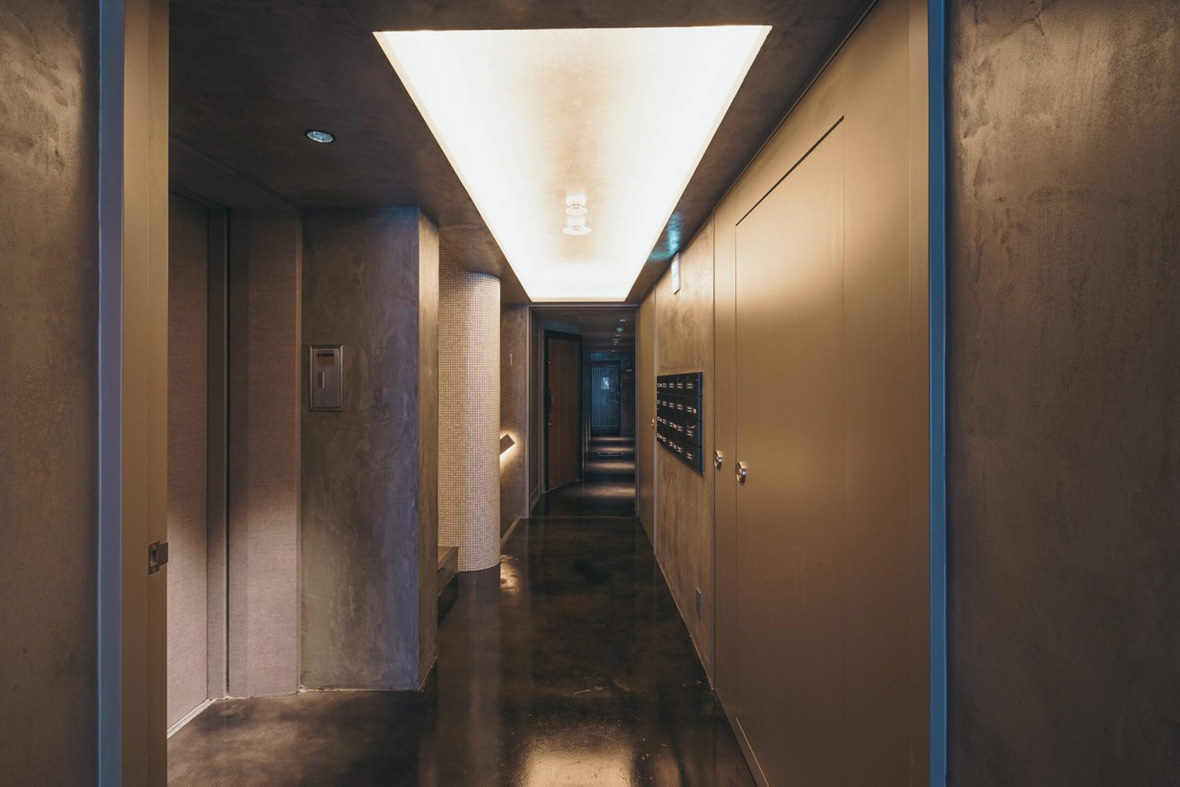
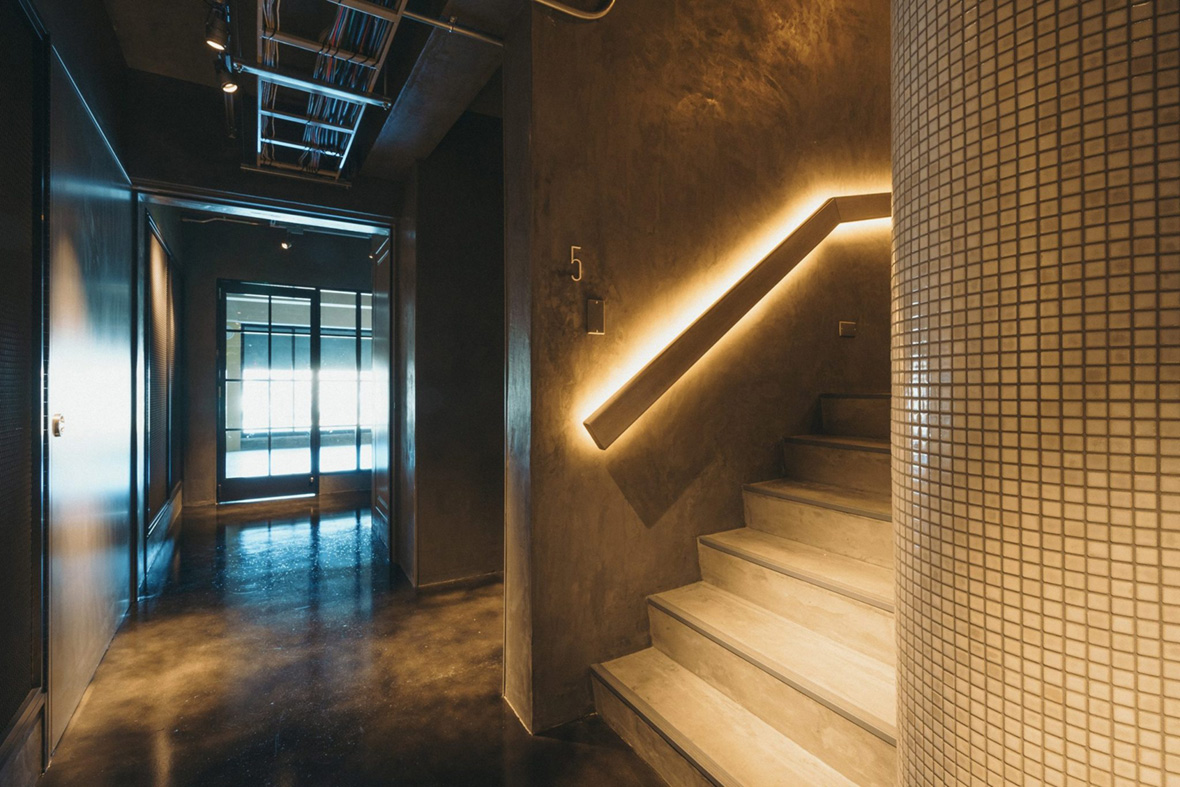
The walls, ceilings, and floors of y gion are mainly composed of concrete that’s finished to look intentionally polished, but still imperfect enough to still feel industrial. The lighting throughout is warm, transforming the otherwise grey rooms into appealing, comfortable spaces. Each space in y gion is flexible, as easily converted into a retail location, a bar or restaurant, or a gallery. Large balconies and floor-to-ceiling sliding glass doors open up the indoor spaces and incorporate Kyoto’s beauty into the building’s design. The rooftop bar, which hosts chu-hai bar Sour in the summer, is exactly the kind of place where a group of friends would want to hang out. To me, the exterior of y gion hints at contemporary art museums; the sheer unbroken concrete surfaces, undecorated windows, and the use of natural light remind me of the Benesse Art Site on Naoshima island. Visitors enter the building through an entrance that is two stories high and has a long light brown noren curtain hanging from the top. The contrasts in materials and color—concrete and wood, grey and brown—echoes the kind of intersectional events Inoue organizes.
While Everedge is thriving, Inoue was looking for ownership over his own projects. “I’m still an interior designer and I love doing what I love. But when you do interior design we give a lot of ideas and then when the project is finished, I hand over the project. Maybe in two, three years when they’re successful they’ll give us a new project, but to me, I wanted to have my own ideas.”
He felt like he was putting a great deal of time into crafting thoughtful interiors for restaurants, hotels, and living spaces that would wind up under other people’s jurisdiction. He was in charge of the initial launch of a place and then detached from the actual use of a location over time—how people inhabit it, what events are hosted, and what kind of culture is nurtured.
y gion 的墙壁、天花板和地板均为混凝土打造,表面既有着明显的打磨处理效果,又保留了适当的瑕疵细节,以彰显工业之美。灯光则采用偏暖色系的照明,让原本灰色调的空间变得舒适亲近。y gion 中的每个空间都很灵活,可轻松改造成零售场所、吧台、餐厅或是画廊。宽敞的阳台和落地推拉玻璃门,令室内空间显得更通透,将窗外京都的美景一收眼底。楼顶酒吧在夏季时售卖烧酒,是朋友们来聚会活动的绝佳选择。在我看来,y gion 的大楼外观看上去很像一座当代艺术博物馆:完整的原始混凝土外墙、未加装饰的窗户和对自然光的运用让人想到了在直岛由安藤忠雄设计的倍乐生艺术场(Benesse Art Site)。大楼的入口有两层楼高,穿过悬挂在门口的浅棕色日式门帘,游客即可进入大楼内部。这些材料和颜色的对撞,与 y gion 所举办的各种跨界文化活动形成某种呼应。
在 Everedge 工作室进展一切顺利的同时,Takuma 也不断寻找属于自己的项目。“我是一名室内设计师,我热衷于自己的工作。虽然与客户的想法有出入,但对我来说,我还是想按照自己的方式来做。” 他感觉无论是建筑还是室内设计,设计师花了如此多心血,但这些空间最终只能归于其他人来管理,那感觉就像是养大的孩子撒手不管。他只能参与到空间最初的启动,之后他就不能再插手,包括人们如何在其中生活、这里所举办的活动以及所营造的空间文化等等。但在 y gion 则不同,这里的空间由 Takuma 设计,也同样由他参与到管理与工作中。
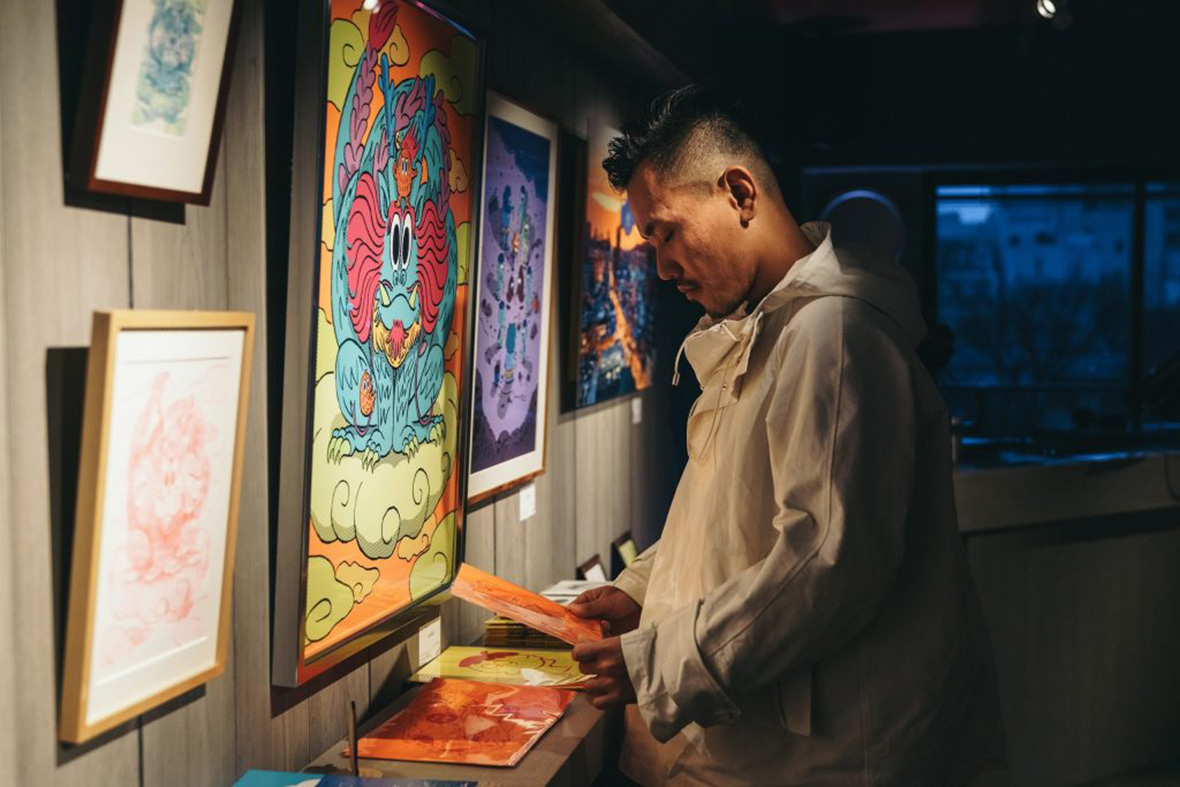
For Inoue, it was especially meaningful to have creative direction on a building in his hometown, which he feels is still missing a developed art environment. “I think people are having difficulty expressing themselves. It’s kind of like they have a mentality of building an art life over a long period of time, which means they don’t know how to brand themselves. I wanted to start this creative directorship for the younger artists or the artists who have a problem expanding their work to the world.” Inoue has high expectations of himself as it pertains to his responsibilities. “I think there’s a difference between being a creative director and being a producer. In the past in Japan the producer was the one who ran the world. To me, producing is connecting this designer to this owner or this restaurant to the other restaurant, just connecting. There is no creativity in it. I think ‘creative director’ means to direct, you know, from the word itself. So when you connect two people or try to create “mixed culture” you need to have your own idea or your own concept to connect people.”
对于 Takuma 来说,在家乡本地从事创意事业意义非凡。在他看来,京都仍然缺乏合适的艺术环境。“我觉得这里的人不擅长表现自我,他们似乎很佛系,不知道如何推广自己。所以我想为年轻一批艺术家或不擅推广的艺术家们提供帮助。”Takuma 对于自己的职责有很高的要求,“我觉得创意总监和制片人是有区别的。过去在日本,制作人的权力最大。但在我看来,制作人的职责是帮设计师联系某个客户或某家餐厅,只是牵线搭桥,不涉及创意。而‘创意总监’顾名思义,是需要临位指导的。当你联络双方或尝试创造‘混合文化’时,是需要有自己的想法或概念才能真正起到连接的作用。”
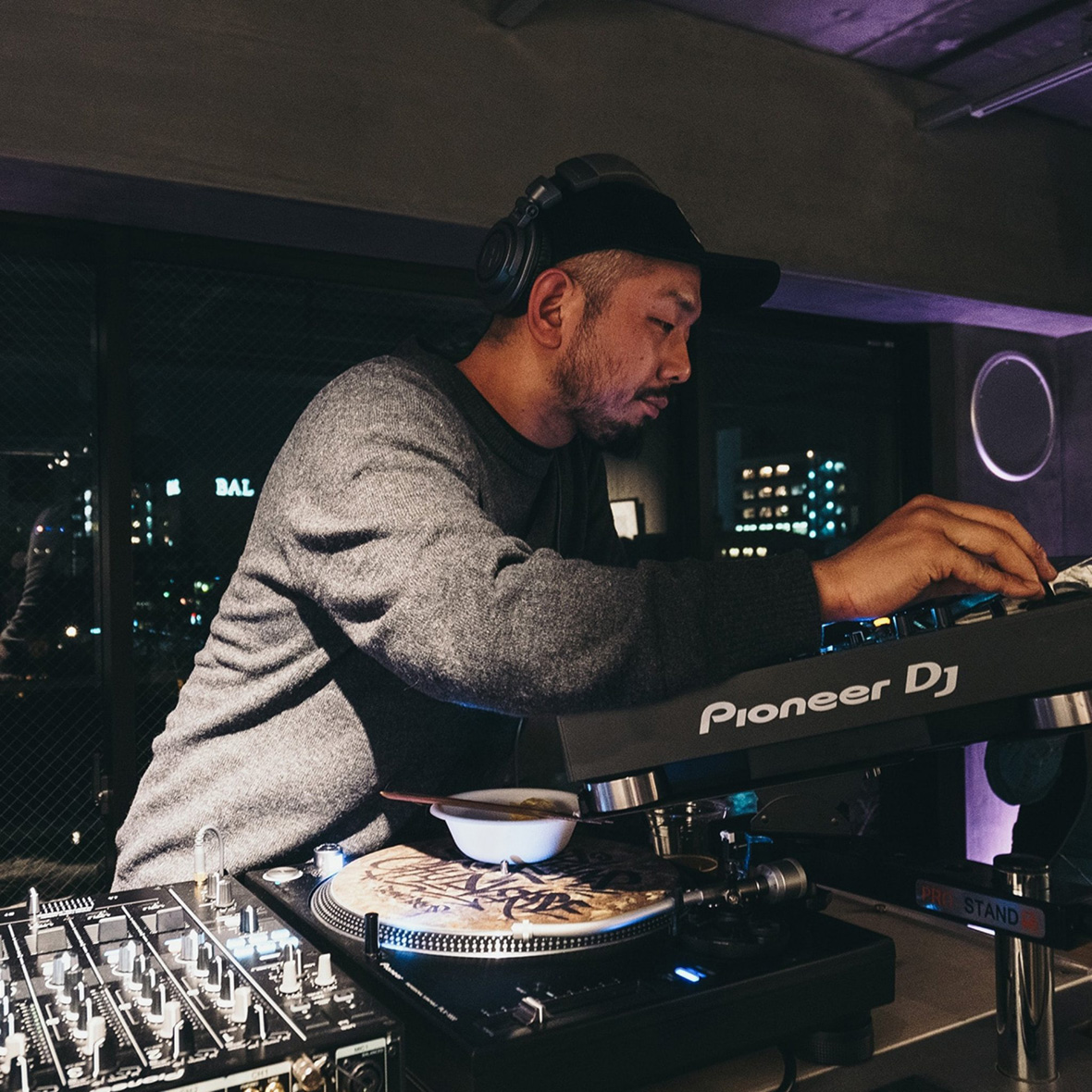
The term “mixed culture” requires a little more elaboration. Inoue goes on to say, “We create events that are “mixed culture.” We have food and art, art and music, art and sound. ‘Mixed culture’ is our concept. Let’s say someone is interested in food and comes for the food; maybe one out of ten people becomes more interested in the art and that for me is expansion of the culture.”
Part of y gion’s core mission is to connect disparate creative concepts in a way that appeals to all kinds of people while supporting artists. Inoue continues to explain how y gion is doing something different by describing the cultural climate in Kyoto. “The problem in second cities is if you want to do something in music you start from the underground, but the underground scene just stays underground. If a hundred people come, it’s always the same one hundred people. It doesn’t expand. And I think, ‘Why is that?’”
Takuma 进一步对“混合文化”作出了解释:“我们举办‘混合文化’的活动,有美食与艺术的交融,有艺术与音乐的连接,也有艺术与声音的搭配。‘混合文化’是我们的理念。比如有一部分人对美食感兴趣,奔着美食而来,我们或许可以令其中十分之一的人对艺术产生兴趣,这对我来说就是文化的传播。”
吸引不同群体的汇合,同时为艺术家提供帮助,是 y gion 的核心使命之一。Takuma 接着说道:“二线城市的问题在于,如果你想做音乐,就得从地下开始,但地下圈子会一直在地下。如果来了一百位观众,那圈子里就会一直是这一百个人,而且不会继续壮大,人数只会越来越少。所以有个问题困扰我很久,究竟是什么导致了这样的状况?”
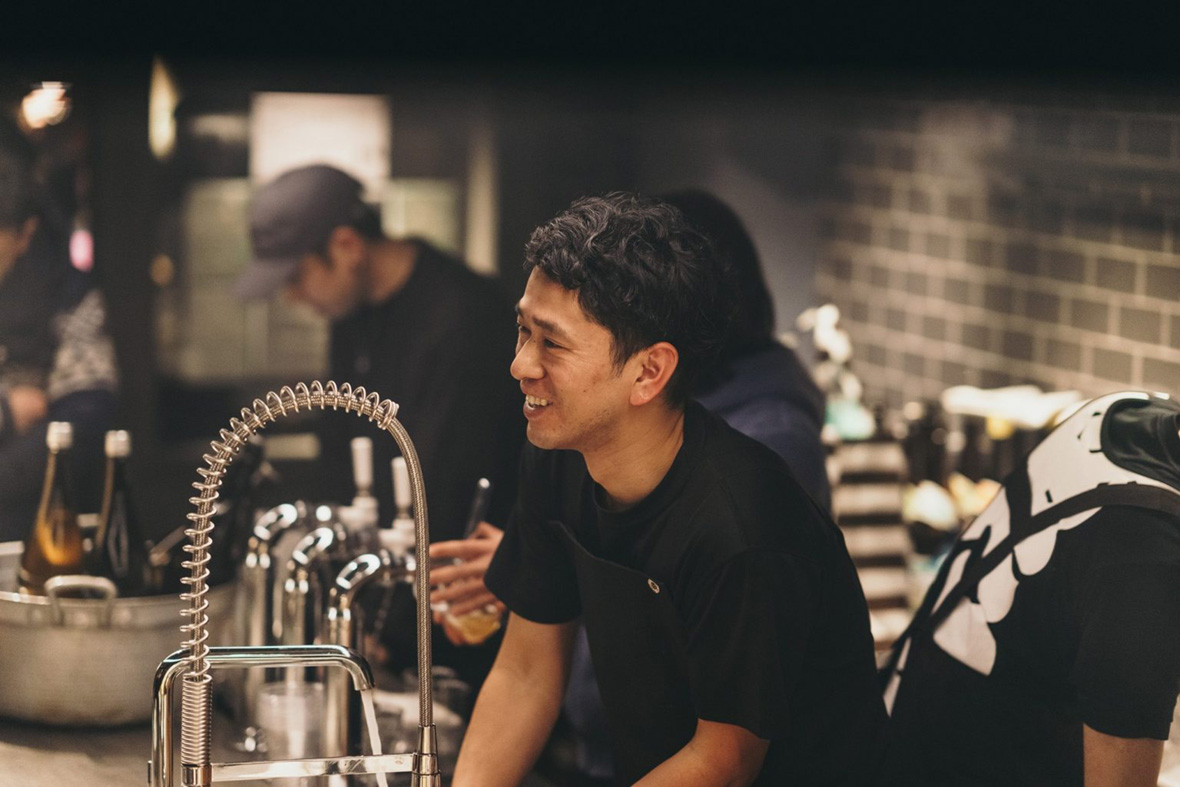
Inoue lived in New York from the age of sixteen to twenty-three. His time in the States changed the way he thinks. “I saw a lot of art coming from the street, like Andy Warhol and Keith Haring. Those people tried to make it on the street level and then in clubs and galleries. At some point of their lives they gain patrons so they are able to expand their art and creativity. But in Japan, first of all, people don’t buy that much art and also, we don’t have that scene.” While Inoue frequently praises Kyoto, he also sees something lacking in the way the locals perceive art and culture. “For me the difference is that, whenever something cool is happening I can say that it’s cool without somebody else telling me. I think in Kyoto or Japan, it’s more of, ‘Oh, because somebody is saying it’s cool, it’s cool.’” Changing the attitudes of Japanese people to embrace “mixed culture” is one of his goals for y gion.
“If you mix cultures like art and music people who are not interested in art become interested, because they came for the other thing and accidentally find something more interesting. If I don’t provide those spaces that express not one, but two or three creative realms, it doesn’t expand.” For example, one event Takuma held at y gion was a pop-up of the restaurant Shokudou Ogawa sponsored by Shuhari Sake. The gallery space on the same floor of the building was holding an exhibition of the photographer and architect Hiroshi Sugimoto. The photos on display were Sugimoto’s Seascapes, large black and white photos of the horizon line of seas around the world. In addition to the food and exhibit, a rotating line-up of three local DJs played a mix of 90s hip-hop. Inoue makes sure that each part of an event held at y gion is strong on its own. The music isn’t an afterthought and the food isn’t provided just because refreshments are necessary.
16 岁到 23 岁期间,Takuma 一直在纽约生活。美国的生活改变了他的思维方式。“我看到很多发源于街头的艺术家,比如安迪·沃霍尔(Andy Warhol)和凯斯·哈林(Keith Haring)。他们从街头起步,一路发展到俱乐部和画廊。在某个阶段,他们获得了赞助人的扶持,因而能够进一步扩展他们的艺术和创作。但在日本,首先购买艺术品的人就少,这对艺术本身的发展并不利。”Takuma 对家乡京都一往情深,同时他也看到当地人对艺术的看法存在问题。“对我来说,不同之处在于,看到一些很酷的事情时,我可以直接说它很酷,不需要其他人来告诉我。而在京都或日本,更多时候,人们是‘哦,因为有人说它很酷,所以它很酷’”。改变日本人的态度并接纳“混合文化”是他对 y gion 寄予的期望之一。
“当你把艺术和音乐等不同领域的文化相融合,那些原本不关心艺术的人自然也会关注,他们本来出于其他原因而来,却在无意中发现更有趣的事物。尤其在二线城市,如果太过单一,就无法扩展艺术这个圈子。”
Takuma 曾在 y gion 举办过由 Shuhari Sake 赞助的 Shokudou Ogawa 餐厅快闪店,当时在大楼同层的画廊空间里还举办了摄影师兼建筑师杉本博司的作品展出。与此同时,空间内在展出他的作品《海景》,包括了一系列拍摄于世界各地的黑白色海洋地平线的巨幅作品。除了美食和展览,有三位当地 DJ 正轮番播放着 90 年代嘻哈音乐。Takuma 尽量确保在 y gion 举办的活动中,每一个部分都能独树一帜:音乐部分不是为了衬托气氛,美食部分也不是为了作为茶点而提供。
One instance of external validation to Inoue that his concept for y gion is working came from Robert Del Naja of the British music group Massive Attack. According to Inoue, Robert Del Naja spent $3,000 purchasing art at a collaborative gallery event featuring Kyoto-based artists Bakibaki, known for bold, geometric motifs, and Daijiro Hama, famous for his experiments with inky portraiture. Inoue tells me this story not to name drop, but to explain how this occurrence was proof of concept and how valuable that proof is for him to show local artists. “For y gion, when we did the event, we gave them proof that the art could sell and that time I felt really good because I could show artists that even in Kyoto, you can still sell art. I think that’s the highlight of the event that we did. And I can say it shows artists that they can be confident going out into the world.”
让 Takuma 意识到 y gion 的理念正在发挥作用的契机,是来自英国音乐团体 Massive Attack 的 Robert Del Naja 的一次光顾。Takuma 表示,Robert Del Naja 以 3000 美元的价格购买了当天展出的一件艺术品,参与这次画廊活动的艺术家包括了以大胆几何图案著称的京都艺术家 Bakibaki 和以实验性墨迹肖像而闻名的 Daijiro Hama。Takuma 分享这个故事不是为了蹭热度,而是为了证明其理念的可行性,那次成功让整个空间在当地年轻艺术家心里站住了脚。“真的很欣慰,我们想向大家证明,出售艺术品绝非天方夜谭,我们可以让其他艺术家相信,即使在京都,你依然可以卖出自己的作品。这是我们所举办的活动里的一次亮点,我们也让艺术家们明白,他们完全可以自信地走向世界。”
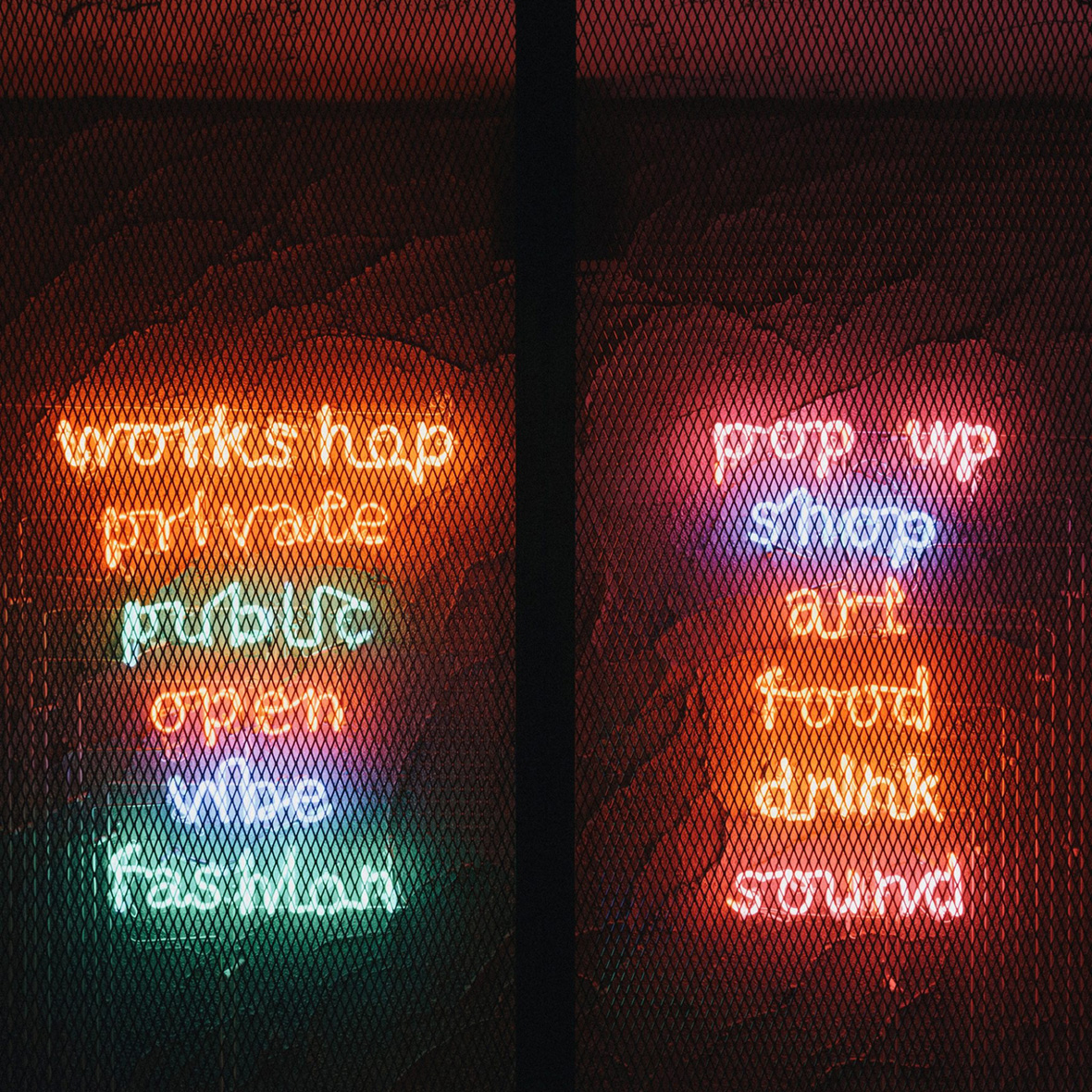
Inoue’s focus on having Kyoto-based artists use y gion as a launching pad is linked to how much the phrase “locally grown, internationally known” resonates with him. (He has been using it as the tagline for y gion.) Inoue answers my question about what he thinks the future of Kyoto looks like, “I think second cities that keep their authenticity or original ideas are going to be successful rather than big cities.” Second cities are the second or third largest cities of a country. Australia’s second city is Melbourne and Canada’s second city is Montreal. “You don’t need to be in a big city to have the latest information and in big cities it’s all the same brands, like Hermes and Louis Vuitton. Everywhere you go it’s the same product.” Inoue believes each second city has something no other city has. If people in those places continue to support their local artists and mix the culture inherent in their city, those things will have far-reaching appeal. “If you respect local ideas that are going on in your local city that’s the global mindset, because people want to see that.”
Part of the reason why Japan is interesting to the world is its rich history. Inoue sees both sides of the coin. On one hand, he says,“In the States, because they don’t have a history they can create new stuff.” He thinks its easier in America to innovate in industries such as entertainment, because there is less history to refer to. “At the same time, you are yourself because of the history. You need to respect history to expand or have new ideas, because if you forget where you come from you never know where you’re going.” It’s possible to be respectful of history while moving culture forward, but the Japanese government doesn’t always agree. “At some point you need to break boundaries and breaking boundaries to the government is not an option. To me, new creative ideas are really the driving force to have a new event or new ideas. The government structure needs to change, but it’s not happening.”
Takuma 之所以要让 y gion 成为专注于京都艺术家的平台,这与他所提出的“立足本土,扬名国际”(locally grown, internationally known)理想密不可分,他甚至把这句话当作 y gion 的标语。我问 Takuma 他认为京都未来会是什么样子的,他回答道:“我觉得京都在未来是一座既能保持本土特色、又能有创意支撑的二线城市。能不能成为大城市对我来说其实没多大必要,眼下,你不需要住在大城市,就能获得最新资讯。而且在大城市里,来来去去都是那些品牌,比如爱马仕和路易威登。无论走到哪里,都是千篇一律的商品。”Takuma 相信,这些二线城市都有着其他城市所没有的独特之处。如果本地人们能继续支持当地的艺术家,融合本地城市所固有的文化,最终能对后代产生深远的影响。“尊重本地城市的想法,这是一种全球思维,因为这才是人们想看到的东西。”
日本令世界感兴趣的一部分原因在于其丰富的历史。Takuma 觉得这有利有弊。一方面,他认为:“在美国,因为没有历史,所以他们会不断创造新事物。”在他看来,在美国的娱乐等行业,创新更容易,因为可参考的历史并不多。“另一方面,历史造就了你,你需要尊重历史,在这个基础上再去拓展、创新,如果你忘记了自己的根,就会变得不知何去何从。”人们可以在尊重历史的前提下推动文化发展,但有时却会遭到日本政府的反对。“你需要打破界限,但有时政府却不买账。在我看来,新的创意是催生新事物或新想法的动力。政府结构需要变革,可现实却事与愿违。”
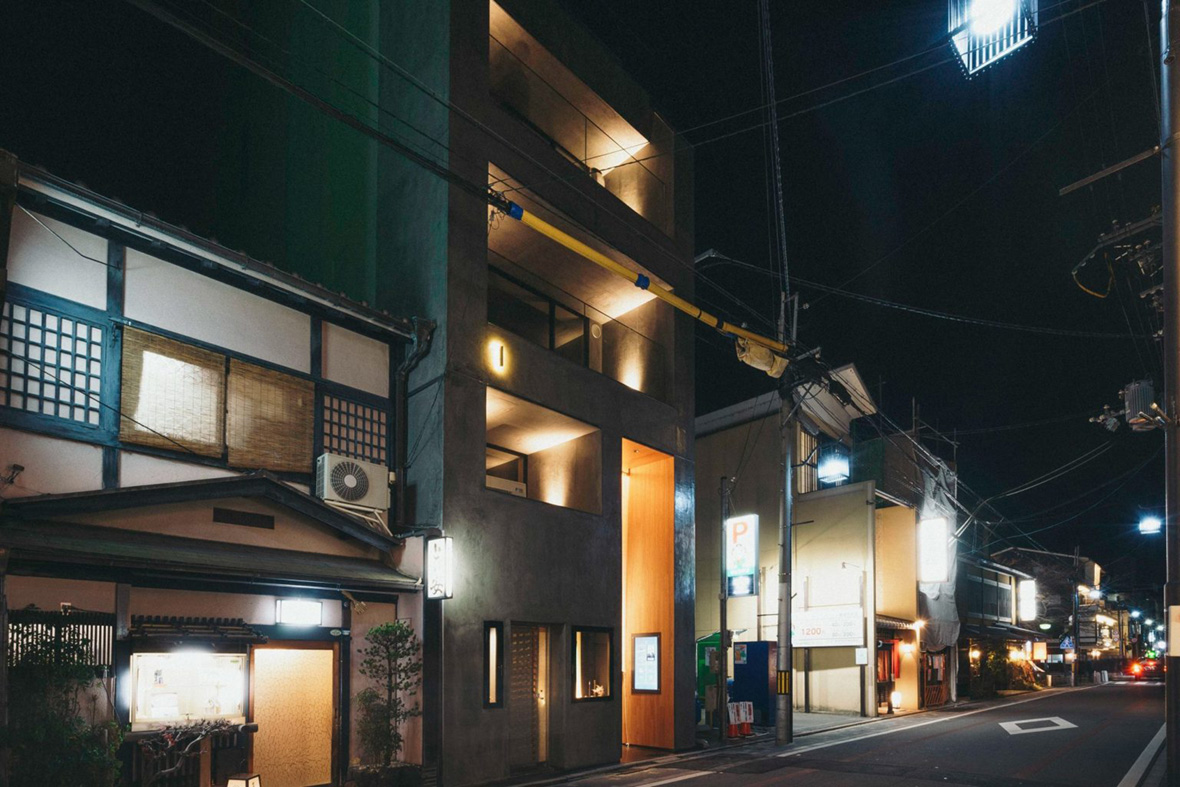
Inoue is not alone at y gion breaking boundaries and bringing his vision to life. He actively looks for people, artists, and brands who want to break boundaries in the same way he does. “Usually big department stores have to make money right away so you have to bring tenants that are popping but, as I said before, I want to do something that will last long. To do that you need to be really careful in selecting brands that have the same mentality as you.” Recently, y gion’s first tenant moved in: Jazzy Sport, a music collective, record store, and music label from Tokyo. Jazzy Sport being established in y gion is a significant milestone on the way towards Takuma accomplishing the goals he has set for himself.
He has a clear picture of what happens next. His humanistic goals are ordered from the people closest to y gion outwards. First, y gion becomes fully occupied with tenants whose mindsets are authentic in their desire to mix culture and bring people together as opposed to make money. Second, the building is constantly busy with visitors who understand what y gion is trying to do. Third, the artists y gion features achieve global recognition. Inoue declares, “That’s the moment I could say that this was successful.”
在 y gion,Takuma 并非孤身一人。他不断去发掘和他一样想要突破创新的人才、艺术家和品牌。“一般大型的百货公司都要求能马上赚钱,所以入驻的商户都是知名的品牌;但正如我之前所说,我想建立更持久的合作,因此在合作选择上需要斟酌很久。”最近,y gion 迎来了第一个商户 —— Jazzy Sport,一个来自东京的音乐团体、唱片店和音乐厂牌。Jazzy Sport 进驻 y gion 是 Takuma 实现自己目标的一个重要里程碑。
对于未来 Takuma 有着清晰的构想。接下来,他首先要为 y gion 凝聚志同道合的人群,而不是盲目盈利。其次,让越来越多的圈外人群了解 y gion。最后,让 y gion 所支持的艺术家获得全球的认可。Takuma 说:“到那时候,才算真正的成功,现在一切才刚刚开始。” 而 y gion,就像是一把撑起京都艺术的“油纸伞”,将不同人群聚集起来,每一片伞页都带有不同的风采,同时又保留了传统。
Website: www.ygion.com
Instagram: @y.gion
Media Partner: MAEKAN
Contributor: Charis Poon
Photographer: Mitsuru Wakabayashi
Chinese Translation: Olivia Li
网站: www.ygion.com
Instagram: @y.gion
媒体合作伙伴: MAEKAN
供稿人: Charis Poon
摄影师: Mitsuru Wakabayashi
中译英: Olivia Li


